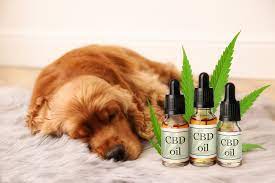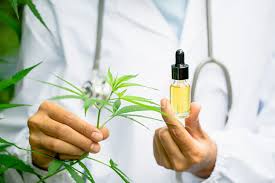Introduction to CBD Oil Extraction
As the demand for CBD oil continues to surge, finding an efficient and effective method to extract this valuable compound has become crucial. CBD, or cannabidiol, is a non-psychoactive cannabinoid found in cannabis plants, celebrated for its numerous therapeutic benefits. Extracting CBD oil from the cannabis plant requires specific techniques to ensure high quality, potency, and purity.
Understanding CBD Oil Extraction
CBD oil extraction involves separating CBD from the cannabis plant to create a concentrated form suitable for various applications. The extraction process greatly influences the final product's quality and effectiveness. This article explores the most effective methods for extracting CBD oil and their respective pros and cons.

CO2 Extraction
CO2 extraction is widely regarded as the gold standard in the cannabis industry due to its efficiency and ability to produce high-quality CBD oil. This method leverages carbon dioxide under high pressure to isolate and extract cannabinoids.
Process:
- Supercritical CO2 Extraction: Supercritical CO2 behaves both as a liquid and a gas when exposed to high pressure and low temperatures. This state allows it to efficiently dissolve cannabinoids.
- Subcritical CO2 Extraction: At lower temperatures and pressures, subcritical CO2 is used to extract terpenes and other sensitive compounds.
Pros:
- Purity: Produces high-purity CBD oil free from chlorophyll and other unwanted compounds.
- Efficiency: Extracts a wide range of cannabinoids and terpenes.
- Safety: Non-toxic and safe for consumers and the environment.
Cons:
- Costly: Requires expensive equipment and high operational costs.
- Complexity: Involves precise control of temperature and pressure, necessitating skilled operators.

Solvent Extraction
Solvent extraction is a more accessible method that uses solvents like ethanol, butane, or propane to dissolve cannabinoids and other compounds from the cannabis plant.
Process:
- Ethanol Extraction: Ethanol is a common solvent used to soak the cannabis biomass. After dissolving the cannabinoids, the mixture is filtered and evaporated to remove the solvent, leaving behind a concentrated oil.
- Hydrocarbons (Butane/Propane): Hydrocarbons can extract cannabinoids under low temperatures, preserving terpenes and enhancing flavor profiles.
Pros:
- Accessibility: Easier and cheaper compared to CO2 extraction.
- Efficiency: Effective at extracting a wide range of cannabinoids and terpenes.
Cons:
- Residue: Potential for residual solvents in the final product, which can be hazardous if not removed.
- Safety: Involves flammable solvents, posing safety risks during extraction.

Oil Infusion
Oil infusion is one of the oldest and most straightforward methods for extracting CBD oil. This method uses carrier oils, such as olive or coconut oil, to absorb cannabinoids from the cannabis plant.
Process:
- Decarboxylation: The cannabis plant material is heated to activate cannabinoids.
- Infusion: The activated plant material is mixed with carrier oil and heated for a period to allow cannabinoids to dissolve into the oil.
Pros:
- Simplicity: Easy to perform without specialized equipment.
- Safety: No use of toxic solvents; generally considered safe.
Cons:
- Shelf Life: Carrier oils can degrade over time, reducing the product's shelf life.
- Efficiency: Lower yield and concentration of CBD compared to other methods.
Lipid Extraction
Lipid extraction utilizes fats, such as butter or MCT oils, to extract cannabinoids. This method is quite similar to oil infusion but specifically uses lipid-based carriers.
Process:
- Decarboxylation: Cannabis plant material is heated to activate the cannabinoids.
- Lipid Mixing: The decarboxylated material is combined with lipid carriers and heated to extract the cannabinoids.
Pros:
- Simplicity: Direct and straightforward process.
- Health-Oriented: Uses food-safe lipid carriers.
Cons:
- Potency: Produces a less concentrated form of CBD.
- Cost Efficiency: Generally less efficient and cost-effective compared to other methods.
Steam Distillation
Steam distillation is a classical method often used in the extraction of essential oils, including CBD oil.
Process:
- Steam Introduction: Steam is passed through the cannabis plant material.
- Condensation: The steam carrying cannabinoids is condensed back into liquid form.
- Separation: The cannabis oil is separated from the water in the condensate.
Pros:
- No Solvents: Uses water and steam, making it a safe method.
- Preserves Terpenes: Effective in preserving the natural terpenes of the plant.
Cons:
- Yield: Often less efficient in yield compared to CO2 or solvent extraction methods.
- Complexity: Requires precise control to avoid damaging cannabinoids and terpenes.

Winterization and Filtration
Winterization and filtration are additional processes often used to purify CBD oil extracted through various methods.
Process:
- Winterization: The crude extract is mixed with ethanol and frozen to solidify fats and waxes.
- Filtration: The frozen mixture is filtered to remove solids.
- Evaporation: The ethanol is evaporated, leaving purified CBD oil.
Pros:
- Purity: Removes fats, lipids, and waxes to produce a cleaner product.
- Versatile: Can be used in conjunction with other extraction methods.
Cons:
- Added Steps: Adds complexity and time to the extraction process.
- Requires Solvents: Utilizes ethanol, which needs to be carefully removed.
Conclusion
Choosing the right method for extracting CBD oil depends on various factors, including desired purity, cost, and complexity. CO2 extraction remains the premium choice for many due to its ability to produce high-quality, pure CBD oil. However, other methods like solvent extraction, oil infusion, and steam distillation offer valuable alternatives depending on specific needs and constraints. By understanding the strengths and limitations of each method, producers and consumers can make informed decisions to ensure they obtain safe and effective CBD oil.

Frequently Asked Questions
1. What is the difference between CO2 and solvent extraction?
- CO2 extraction uses carbon dioxide under high pressure to extract cannabinoids, ensuring high purity and safety. Solvent extraction uses chemicals like ethanol or butane, which can leave residual solvents if not properly removed.
2. Is oil infusion a viable method for commercial CBD production?
- While oil infusion is simple and safe, it is less efficient and produces lower-potency CBD oil compared to methods like CO2 or solvent extraction, making it less ideal for large-scale commercial production.
3. How does winterization improve CBD oil quality?
- Winterization purifies CBD oil by removing fats, lipids, and waxes, resulting in a cleaner and more potent product.
4. Are there any safety concerns with using butane or propane for extraction?
- Yes, butane and propane are highly flammable, posing significant safety risks during extraction. Residual solvents in the final product can also be hazardous if not properly removed.
5. Why is decarboxylation important in CBD extraction?
- Decarboxylation activates the cannabinoids in the cannabis plant, transforming inactive compounds like CBDA into active CBD.
By following these guidelines and choosing the appropriate extraction method, manufacturers can produce high-quality CBD oil to meet growing consumer demand.

